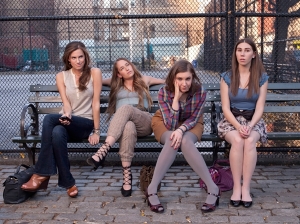I’m angry. I’m sure you’ve heard about the scandal involving Lululemon Athletica, an extremely popular yoga-inspired, athletic wear retailer. Last Spring, Lululemon had produced a batch of their supposedly magical, pricey yoga pants that were overly sheer and therefore exposing the  bums of a select group of customers who were unlucky enough to buy pants during that time period. Lululemon recalled a portion of their pants, and we forgave them for the almost comical mishap and happily resumed downward-dogging.
bums of a select group of customers who were unlucky enough to buy pants during that time period. Lululemon recalled a portion of their pants, and we forgave them for the almost comical mishap and happily resumed downward-dogging.
In recent weeks, though, customers have been filing complaints about the quality of the pants, which have become a style statement in themselves and are worn by many for daily life, in addition to exercise. I’ve even heard people refer to “lulu”, as it’s known, as having a cult-like following. For around $100 a pair, these yoga pants are not your average pair of leggings. They are made from a special, patented fabric that breathes well and doesn’t hold onto sweat, they’re unbelievably comfortable, and have garnered a positive reputation– until now.
When asked about the sheerness of the pants and their durability, Lululemon founder Chip Wilson stated, “Frankly, some women’s bodies just actually don’t work [for the yoga pants].” He also said, “It’s really about the rubbing through the thighs, how much pressure is there over a period of time, and how much they use it” (qtd in HuffPost).
Dear Lululemon, I’m sorry my thighs rub together! I’m sorry your pants, which are supposed to be durable and worn for anything from traveling to running to yoga, are not made well enough to stop my “fat” thighs from wearing down the fabric of your illustrious, elitist pants. Here’s the clincher: Lululemon’s women’s sizing ranges from 2-12, and they refuse to expand their size range to include more women. I was fooled by you, Lulu. I was fooled into thinking you wanted to encourage me to exercise, to “sweat more” (one of your many slogans), to better my body but also love it at its current state for the incredible things it does for me every second of every day. I thought you had a positive outlook on health and on body image in a culture where women are constantly shamed and judged by society based on their external appearance and size. Now, I find out that you explicitly try to shame larger-bodied women by displaying sizes 10 and 12, the largest sizes in your line, in the back of the store in heaps, while the smaller sizes are obsessively folded and restocked to reflect the perfection of the smaller bodies soon to be wearing them.
Rather than manufacturing clothing for all bodies, or at least a wider range of bodies, Lululemon has decided that capping their line at size 12 will encourage people to exercise more so that they can attain that smaller size, as if wearing these pants is a reward for exercise and healthy living. Well, here’s an idea: skinniness is not equivalent to health. Just let that sink in for a minute. Bodies come in infinite varieties, and your body is not the property of other people or corporations to police. Lululemon has claimed to encourage us to “love our bodies”, with the caveat “only if you fit into our culturally-constructed mold of what a healthy body should look like.”
I’m angry. I was initiated into the cult of Lululemon a few years back, often wearing their pants for long airplane flights, cozy days in the library, yoga, or other exercise. I felt empowered wearing my tight black workout pants, and enjoyed feeling confident going to the gym sporting Lulu pants and a coordinated, flattering top. The athletic wear was expensive, but I justified that it would encourage me to exercise and I knew I would feel good doing it, like so many other Lulu-wearers. But I will no longer be buying workout apparel from Lululemon or supporting the company in any way. I’m embarrassed to still have Lululemon pants and tops in my closet, but, after much soul-searching, I will begrudgingly wear them in the interest of resourcefulness until my thick, fat, muscular thighs have worn through the fabric and I can finally burn them without feeling like I wasted $100.




 t explanation: a conspiracy between superficial media culture (whose distortions of the healthy female form pollute even the youngest minds) and unscrupulous plastic surgeons(ever ready to ignore the Hippocratic oath in favor of that more fitting Greek icon, Pluto, captain of wealth and death). Whatever reasons led her to first consider chest enhancement, her motivations since have been corrupted, co-opted, by a self-image disorder. However, instead of working through the moral and medical background of Hershey’s situation, let’s instead look at the responses to her situation left by Internet users at two different but predictably similiar articles: one from
t explanation: a conspiracy between superficial media culture (whose distortions of the healthy female form pollute even the youngest minds) and unscrupulous plastic surgeons(ever ready to ignore the Hippocratic oath in favor of that more fitting Greek icon, Pluto, captain of wealth and death). Whatever reasons led her to first consider chest enhancement, her motivations since have been corrupted, co-opted, by a self-image disorder. However, instead of working through the moral and medical background of Hershey’s situation, let’s instead look at the responses to her situation left by Internet users at two different but predictably similiar articles: one from